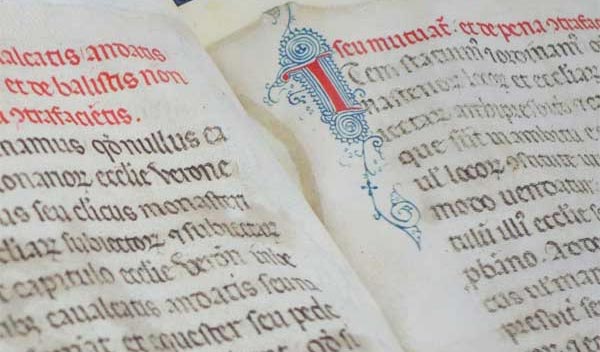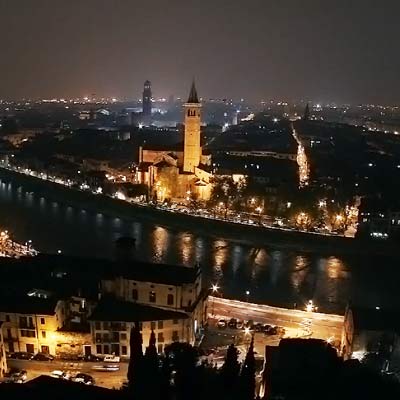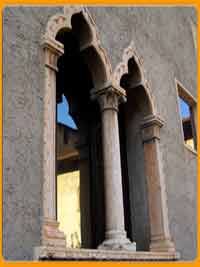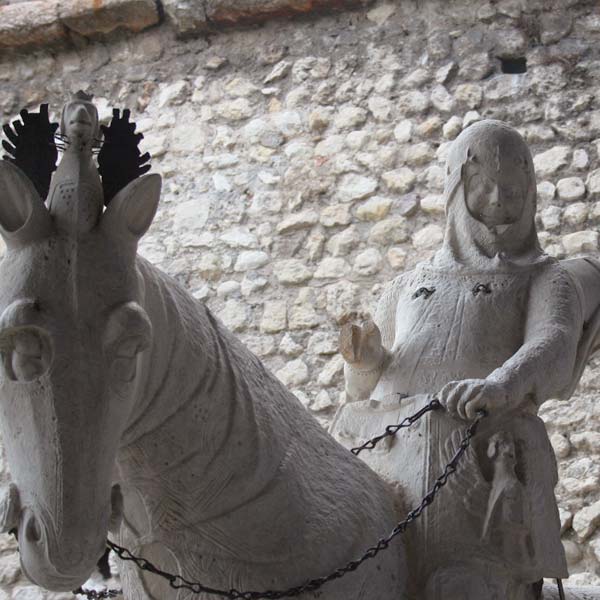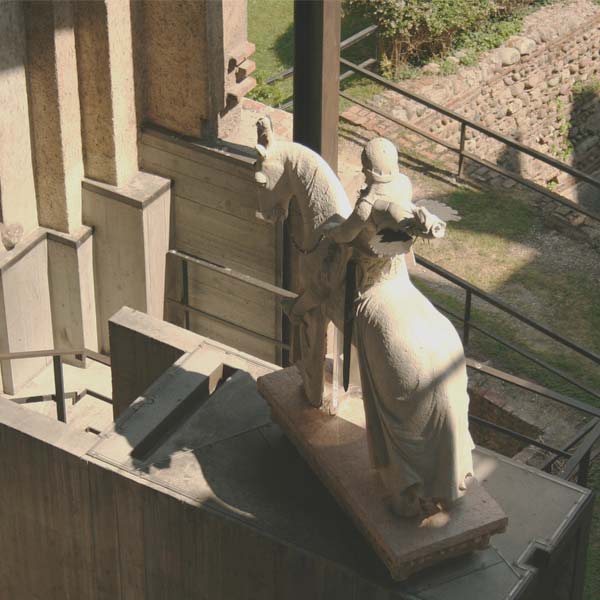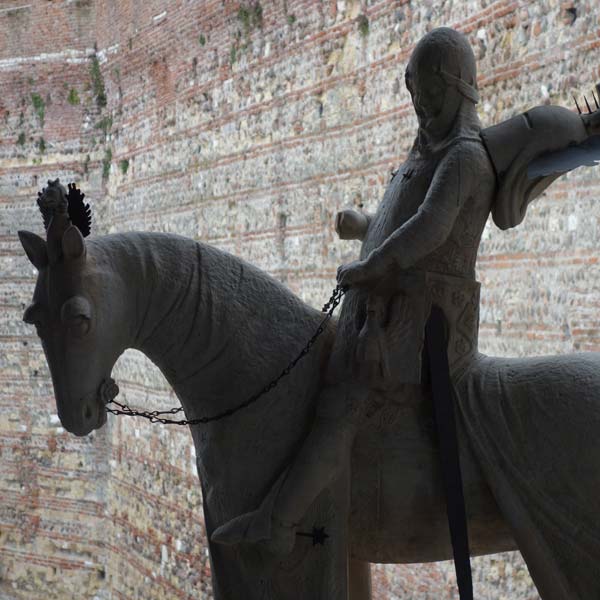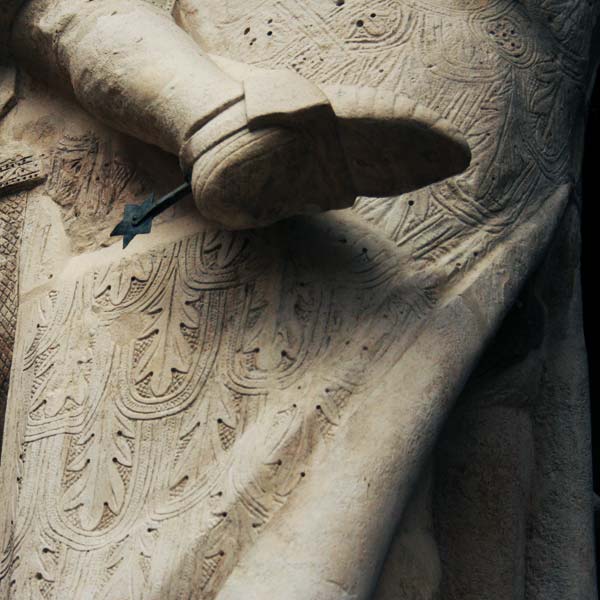Carlo Scarpa's Restoration
The current appearance of the Museo di Castelvecchio is the result of the restoration carried out by Carlo Scarpa, who also took care of the internal layout of the works down to the smallest detail.
The Venetian architect and designer worked on this project from 1956 until his death in 1978. Scarpa's work for Castelvecchio is considered by many to be his masterpiece.

The exterior of the niche that houses the Lombard treasure, a citation to the art of Mondrian, of whom Scarpa was an admirer, and a tribute to the stones of Veronese architectural tradition: the marble of Valpolicella in all its nuances.
Guided Tours
The fundamental elements of Carlo Scarpa's work are illustrated in all guided tours of the Museo di Castelvecchio.
It is also possible to take specific tours focused on the great architect's work in Verona, both at Castelvecchio and at the Banca Popolare di Verona building.
Oncoming Tours
Centuries-old History

When Carlo Scarpa began the restoration of the Civic Museum of Verona, more than six hundred years of dramatic and bloody history weighed heavily on Castelvecchio. It had always been a military building, it had been cannonaded, modified, altered according to the needs of the ruler of the moment. The Napoleonic period at the turn of the eighteenth and nineteenth centuries had heavily modified the appearance, especially in the large courtyard, altered according to the neoclassical style then prevailing.

During the Austrian domination in Castelvecchio there was the chemical laboratory for the production of gunpowder. The corner towers had been lowered and the battlements removed. The appearance was that of an anonymous and square nineteenth-century fortress.
The Restoration by Antonio Avena
Negli anni '30 del novecento, Antonio Avena direttore dei musei civici di Verona, aveva cercato di ridare alla città il suo antico aspetto medioevale intervenendo su molti palazzi e monumenti spesso con un approccio piuttosto "creativo". Si era basato su dipinti settecenteschi che mostravano chiaramente l'aspetto di Castelvecchio prima dei vari interventi che l'avevano stravolto. Così aveva ricostruito torri e merlature e, dove non aveva un modello a cui rifarsi, si era inventato intere porzioni. Ad esempio nella facciata delle palazzine interne, di epoca napoleonica, aveva inserito cornici e decorazioni di case gotico-veneziane distrutte nell'alluvione del 1882.
Anche l'allestimento del museo aveva seguito questa impostazione, con le opere disposte in ambienti ricostruiti come se fossero gli interni di un vero e proprio maniero medievale. L'insieme era indubbiamente suggestivo, ma più adatto a un parco divertimento che a un museo serio.
Carlo Scarpa's Approach
"Castelvecchio was all fake," Carlo Scarpa said in a lecture about its restoration.
There was little to restore to its ancient forms, and trying to do so would have meant having to invent, falling once again into the trap into which Antonio Avena had fallen. Carlo Scarpa then decided to openly declare the falsity of Castelvecchio, making it into a sort of theatrical scenography.
Internal Facade

Carlo Scarpa starts from the building in the inner courtyard, where the entrance to the museum is located. The facade is left in bare concrete, with the door and window frames set back from the wall and the Gothic decorations by Antonio Avena. On the left side, the facade is detached from the castle wall, revealing among other things the Morbio gate, one of the old entrances to the city walls.
Some beams and structures are left out protruding, and part of the roof on this side is without tiles, with the underlying copper sheet exposed. This creates the impression of a thin fake panel, a kind of screen placed on the scene of a theater. To further increase this effect of theatrical scenography, Carlo Scarpa creates a small platform, a real stage, at the center of the facade, in front of the three arches from which one entered in Antonio Avena's installation. Scarpa instead places the entrance at the end of the right side, almost a backstage entrance.Sculpture Gallery

Once inside the Castelvecchio museum, one finds himself in the sculpture gallery, and immediately encounters the novelty of Carlo Scarpa's design. The environment has a minimalist simplicity, the walls and floors in various shades of light gray of raw concrete. The various rooms, each with its own historical period and style (Romanesque, Gothic, Renaissance) follow one another, connected by arches that create a perspective view. On the ceiling, a large metal beam crosses the entire gallery like a timeline.
Pedestals
Carlo Scarpa was not an architect. He had graduated from the Academy of Art and had begun working as a designer for some important Murano glass factories. This sensitivity for materials and forms is transferred into the attention to details in the setting up of Castelvecchio. Carlo Scarpa personally designed all the supports and display cases for the works on display. In this case the sculptures rest on platforms raised from the ground by a central support that makes them seem to levitate on the floor.
The Display
The works, coming from destroyed or renovated religious buildings, therefore out of their historical and architectural context, are thus placed in an absolute dimension, out of space and time. Like ghosts in the "limbo" of the museum, they slide on the ground without walking. The only reminiscence of their ancient location is the light that filters through the side windows as in an ancient Gothic church and that in the intentions of Carlo Scarpa's restoration should have remained natural, varying with the changing of the day.
The Longbard Treasure
On the façade, stretching out towards the outside, is the niche that houses a small Longobard treasure found buried in the province of Verona. The light that filters in from above almost reproduces the mystical atmosphere of a cell or a ravine in which these treasures remained hidden for centuries and protected from the upheavals of the centuries following the collapse of the Roman Empire. The exterior is made with a pachwork of Veronese stone in all its shades of color.
St. Cecilia
In the sculpture gallery of the Castelvecchio Museum, Carlo Scarpa reserved a special place for a gothic tufa sculpture of Saint Cecilia. The work, elegant and slender, rests on the typical Scarpa pedestal but turns its back to the visitor who, upon entering the room where it is placed, sees its back first. Far from wanting to disrespect the public, Carlo Scarpa actually pays a moving tribute to the anonymous sculptor by showing us, first of all, the painstaking work he did to represent the hair styled in an elegant and elaborate braid. The statue was certainly positioned in a niche. The artist's devoted work would therefore never have been seen by those looking at the statue, yet so much effort and skill had been lavished on its creation.
Decorations

In the last room of the sculpture gallery a "window" opens on the floor. From there you can see the canal that brought water to the moat, found during the restoration work. The protection of the glass is reminiscent of some elements of traditional Japanese architecture such as the central fireplace, flush with the floor. Even the sliding panels of woven iron are reminiscent of certain Oriental screens and sliding doors made of bamboo strips.
Scarpa was a great admirer of Japanese architecture and died in an accident in the Japanese city of Sendai during one of his trips to the Rising Sun.
Cangrande Statue
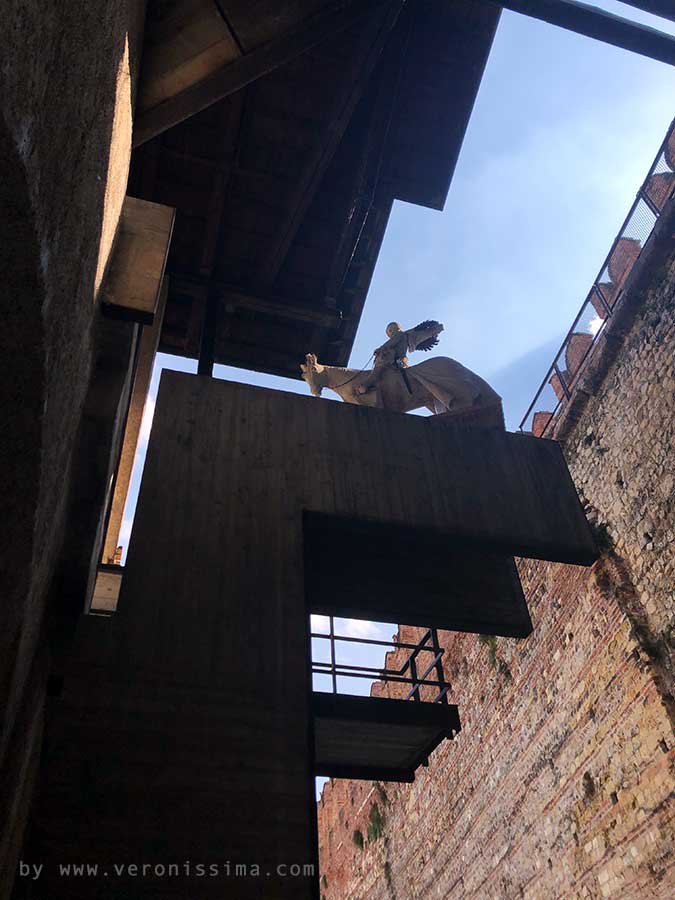
At the end of the sculpture gallery, the route takes us outside into the small courtyard of the residential wing of Castelvecchio. At the top, on a large concrete support in the shape of an upside-down "L", stands the equestrian statue of Cangrande della Scala from the mausoleum of the Scaliger lord where it is replaced by a replica. Cangrande, although unrelated to Castelvecchio which was built by his successors, represents a very important figure for the Veronese, a symbol of historical identity and cultural ties, present on wine labels, soccer team flags, club and association plaques.
If you want to know more

Arche Scaligere
SCOPRI DI PIÙ
Cangrande della Scala
SCOPRI DI PIÙThe Painting Gallery
The art gallery is accessed through the keep, passing by collections of ancient bells and medieval capitals. In the large room that houses the stationary crosses of Gothic art, together with the first, timid attempts by Veronese painters to follow the new pictorial style of the Renaissance, we find some interesting solutions by Scarpa for the decontextualization and absolutization of the work.

The Madonna della Quaglia
Carlo Scarpa reserved a special place for the most iconic piece of art in Castelvecchio: the Madonna della Quaglia. On special tripods specially designed by the architect, Pisanello's painting together with the Madonna of the Rose Garden create a corner separate from the rest of the room, almost a space of meditation for the visitor who can get very close to the works. This great freedom of movement that Scarpa's installation gives to the public in their relationship with the works has always given the museum directors and guards a lot of trouble. Not least the great theft of works, including the Madonna of the Quail, which occurred in 2015, in which the thieves, precisely because of the freedom of access to the works, were able to easily remove be 17 paintings.
However, Scarpa's restoration and staging are considered one work of art among many in the museum and are therefore considered untouchable.
The Armours Gallery
Carlo Scarpa also set up a room to display the small but interesting collection of armor from the Castelvecchio museum, with solutions that we will see again in Scarpa's other great work, the restoration of the Brescia Castle.
'500 to '700 Paintings Gallery
The abrupt death of Carlo Scarpa, (perhaps) victim of an accident during a trip to Japan, in Sendai in 1978, left the project for the Castelvecchio Museum unfinished, but it was taken up and completed by Scarpa's collaborator, Arrigo Rudi. In particular, Rudi was responsible for the completion of the last section of the museum, the one dedicated to the collections of Veronese paintings from the sixteenth to the eighteenth centuries. According to some, however, Rudi's achievements differed greatly from Scarpa's ideas for the second floor of the Napoleonic wing. Aside from the diatribes, the contrast between the darkness and gloom of this section and the airiness and luminosity of the others is very evident, as if they were two completely different museums.
Carlo Scarpa's Castelvecchio Influence
Il restauro e l'allestimento di Carlo Scarpa per Castelvecchio sono da molti considerati il suo capolavoro. The skilful combination of modern and minimalist elements and materials with the ancient structures in such a way as to create a pleasant contrast that exalts both, was revolutionary at the time and many, even today, are critical of Scarpa's operation. However, this way of working has now become a consolidated artistic language used by architects all over the world.
There are many visitors to Castelvecchio who focus their internal journey more on the work of Carlo Scarpa than on paintings and sculptures. It is not uncommon to see young students of architecture and design photographing details of supports and finishes rather than the canvases displayed on the walls.
If you want to know more

Castelvecchio: guida al museo e visite guidate
FIND OUTAbbiamo qui proposto alcuni spunti per una visita guidata alla scoperta del geniale lavoro di Carlo Scarpa al Museo di Castelvecchio. For more information about our guided tours of Castelvecchio, its museum, the walkways, to be coupled perhaps to the traditional city tours write to:
Enquiries and Bookings:
+39 333 2199 645 info@veronissima.com P.I. 03616420232 C.F. CPPMHL74L13L781C

 IT
IT 日本
日本 DE
DE FR
FR 中文
中文 ES
ES





